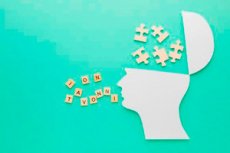Medical expert of the article
New publications
Imaginative and logical thinking: the key to creative analytics
Last reviewed: 30.06.2025

All iLive content is medically reviewed or fact checked to ensure as much factual accuracy as possible.
We have strict sourcing guidelines and only link to reputable media sites, academic research institutions and, whenever possible, medically peer reviewed studies. Note that the numbers in parentheses ([1], [2], etc.) are clickable links to these studies.
If you feel that any of our content is inaccurate, out-of-date, or otherwise questionable, please select it and press Ctrl + Enter.

In today's world, where information flows are increasing every day, figurative and logical thinking is becoming not just a valuable skill, but a prerequisite for success in various spheres of activity. This type of thinking combines the ability to think analytically and logically with an imaginative and creative approach to problem solving.
What is figurative and logical thinking?
Imaginative and logical thinking is a thinking process that combines logical analysis with imaginative imagination. It involves the use of metaphors, analogies, and visualizations to unravel complex concepts and problems. Through images and symbols, this approach allows you to see non-obvious connections and patterns, making abstract ideas more accessible and understandable.
The importance of imaginative thinking
Unlike purely abstract or symbolic thinking, imaginative thinking offers concrete visual representations that help the brain better structure and remember information. Imaginative thinking enhances memory, as a person does not just mechanically memorize data, but creates associative links between them and visual images.
Logical side
The logical side involves a critical approach and the ability to construct coherent reasoning. It requires a person to be able to distinguish true statements from false ones and to apply various methods of deduction and induction to analyze a problem.
Application of figurative and logical thinking
In education.
Imaginative and logical thinking can radically change the learning process, making it more dynamic and effective. Teachers can use images to explain complex concepts, and students can use logic to structure their knowledge and critically analyze the information they receive.
In business
In the business environment, figurative-logical thinking helps managers and teams find out-of-the-box solutions to problems, fostering innovation and creativity. This is especially true in new product development, strategic planning and marketing.
In everyday life.
In everyday situations, this type of thinking helps to reflect and rethink personal experience, allows for a deeper understanding of the surrounding reality and to make connections between different aspects of life.
Development of figurative and logical thinking
Development strategies
- Visualization: Regular visualization practice can improve your ability to think imaginatively. Try representing complex concepts as diagrams, maps, or models.
- Analogies and Metaphors: Use analogies and metaphors to explain or understand complex ideas. This helps create bridges between the familiar and the unknown.
- Problem solving: Regularly encounter a variety of tasks that require logical and imaginative thinking to solve. Puzzles, strategy games and math problems can stimulate this process.
- Creative Activities: Art, music, and literature can be powerful tools for developing imaginative and logical thinking because they allow for free exploration of ideas in an unstructured environment.
- Critical Thinking: Practice asking questions, critically analyzing and evaluating information. This will help you develop your ability to reason logically and build arguments.
Examples of exercises
- Creating mind maps to visualize connections between ideas.
- Reading and analyzing literary works to find hidden meanings and analogies.
- Recording dreams and trying to interpret them by relating them to real life situations.
- Participate in debates and discussions that require rapid evaluation of arguments and formation of reasoned responses.
Techniques for the development of figurative and logical thinking
- Brainstorming: This method allows you to generate new ideas without the constraints of critical evaluation. It encourages the free flow of thoughts and supports imaginative thinking.
- Imagination games: Games such as "what if", "build a story" or "find an unusual use" can improve the ability to think outside the box.
- Meditation and Mindfulness: Mindfulness practices help improve concentration and clarity of mind, which is important for clarity of thought and image generation.
- Heuristic Methods: Using heuristic techniques such as "divide and conquer" or "analogy" to solve problems.
- Working with Synectics: A method that connects elements seemingly unrelated to each other to create original ideas and solutions.
Exercises for home and school
- Role-playing, where children can take on different characters and situations, promotes empathy and imaginative thinking.
- Project assignments, where you have to create something new or improve an existing one, develop engineering thinking and creativity.
- Tasks to find patterns and correspondences, such as in math or science, improve analytical skills and attention to detail.
Role in education
In modern education, the emphasis is shifting towards the development of critical and imaginative thinking. Curricula increasingly include tasks for the development of creativity, independent research projects and creative assignments. This helps students not only to master factual material, but also to learn how to apply knowledge in non-standard situations.
Figurative and logical thinking is a tool that helps a person to adapt to a rapidly changing world, where quick orientation in the flow of information, generation of innovative ideas and the ability to solve non-standard problems are required. The development of this type of thinking is an important task for both education and personal growth of each person.
Imaginative and logical thinking opens the door to a deeper and more creative approach to problem solving. It allows us to combine the precision and analytical acuity of the logical mind with the richness and flexibility of the figurative imagination. By developing this type of thinking, we not only improve our intellectual abilities, but also enrich our personal inner world, opening new horizons of creativity and self-knowledge.

